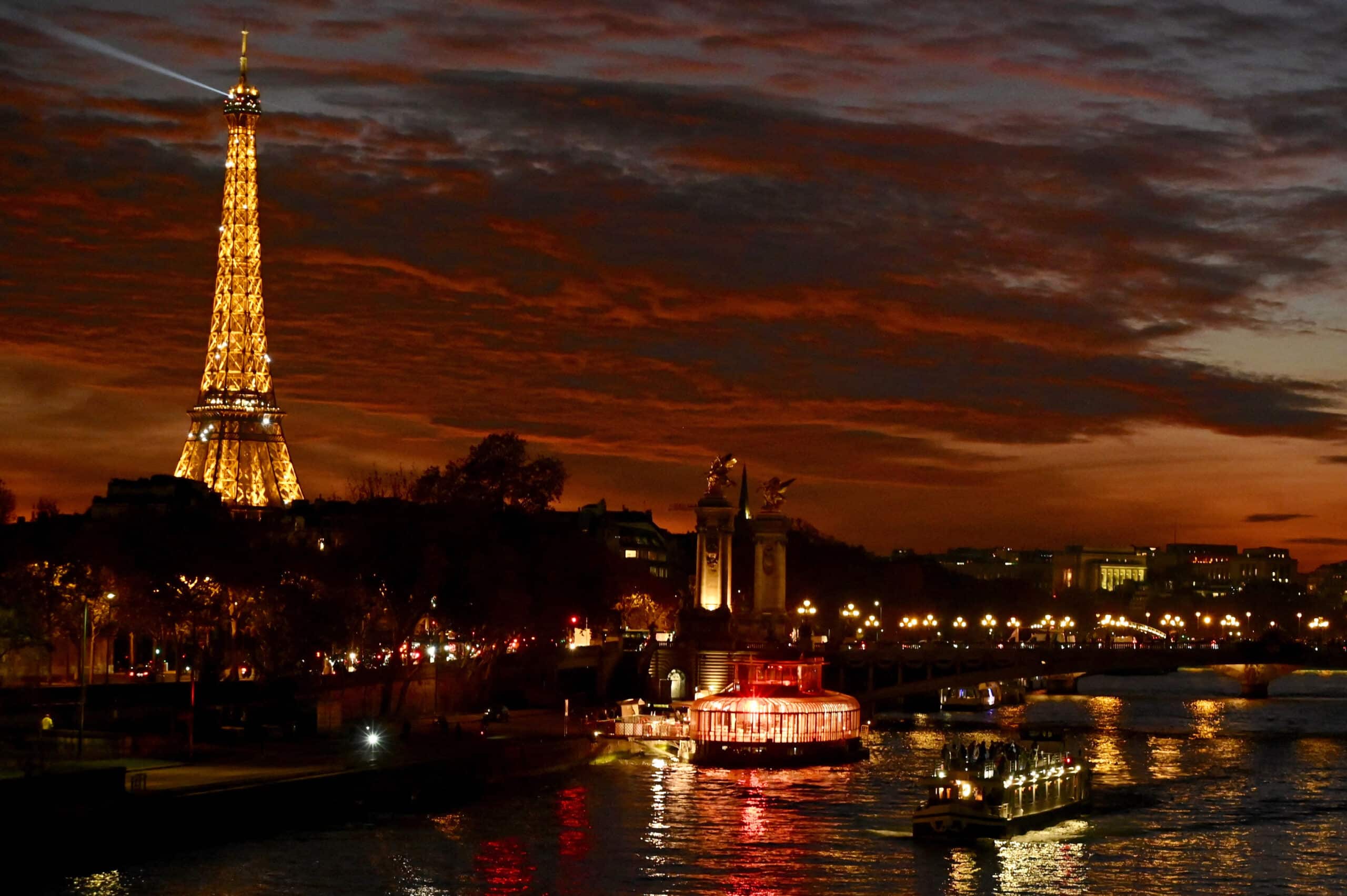
This photograph shows the illuminated Eiffel Tower and a tourist boat making its way along the River Seine at sunset, in Paris on November 13, 2024. Agence France-Presse
PARIS — Paris authorities are scrambling to halt an ongoing decline in the number of residents in the French capital’s center which has dropped by around 10,000 every year for the past decade.
The city of Paris, limited by the “Peripherique” ringroad, currently counts 2.1 million inhabitants, some 140,000 fewer than in 2013. The surrounding region, called “Ile de France” (Island of France) totals over 12 million.
The exodus from what is the European Union’s most densely-populated capital has caused hand-wringing at city hall where the municipal council is preparing to debate a new urban development plan (PLU), submitted by mayor Anne Hidalgo, a Socialist, and her allies.
READ: France to reform parental leave after births hit post-war low
The aim is to raise the quality of living in the capital over the next decade and beyond to stop the exodus of middle-income residents and families, notably by boosting affordable housing, but also by helping residents adapt to the effects of climate change.
The conservative opposition, spearheaded by Rachida Dati, France’s culture minister and Hidalgo’s most outspoken rival, says people have “fled” the capital because of what it calls an “unbearable urbanization” caused by too much construction.
“You can’t breathe in Paris any more,” said opposition politician Pierre-Yves Bournazel. Plans to elevate existing buildings would exacerbate the problem creating “street canyons”, his party said.
‘Larger, more expensive homes’
Longtime Hidalgo ally Ian Brossat, a communist senator, responded that Parisians needed “social and affordable” housing if they were to stay put, adding the city had never before invested as much in homes for lower-income residents as it did currently.
Beyond political infighting, experts point to a number of post-war trends that explain the dwindling number of central Paris dwellers.
READ: French economy grows more than expected in second quarter
The main factor is the growing quality of housing, and the subsequent increase in living space available to each citizen, said Jean-Christophe Francois, a geography professor at Paris Cite University.
“As comfort levels rose, cheap and overpopulated housing was replaced by larger and more expensive homes,” he said.
Many small apartments in which families were squeezed together were, over the years, combined into bigger living units for fewer people, transforming “an appalling density into something more reasonable”, he said.
A rising divorce rate and people moving out of the city during the Covid pandemic added to the trend already seen since the 1960s, he said.
The Airbnb factor
But experts said the biggest recent factor is a sharp increase in rarely-used second homes in the capital — often owned by wealthy foreigners — and a surge in short-term rentals such as those offered on the Airbnb platform.
The Apur urbanism agency said in a recent report that the number of residences used as primary homes has been constantly falling in the capital, despite more homes actually being built — the flipside of the attractiveness of Paris, that it shares with New York or London.
This had made rents increase and cut the number of rental units available to new arrivals in the capital. “With Airbnb, we have lost 26,000 homes in central neighborhoods,” Hidalgo told AFP.
City hall’s draft development plan calls for a ban on new spaces dedicated to Airbnb rental in tourist areas such as Montmartre or the Marais. Hidalgo’s allies have also called for higher taxation on second homes in the capital.